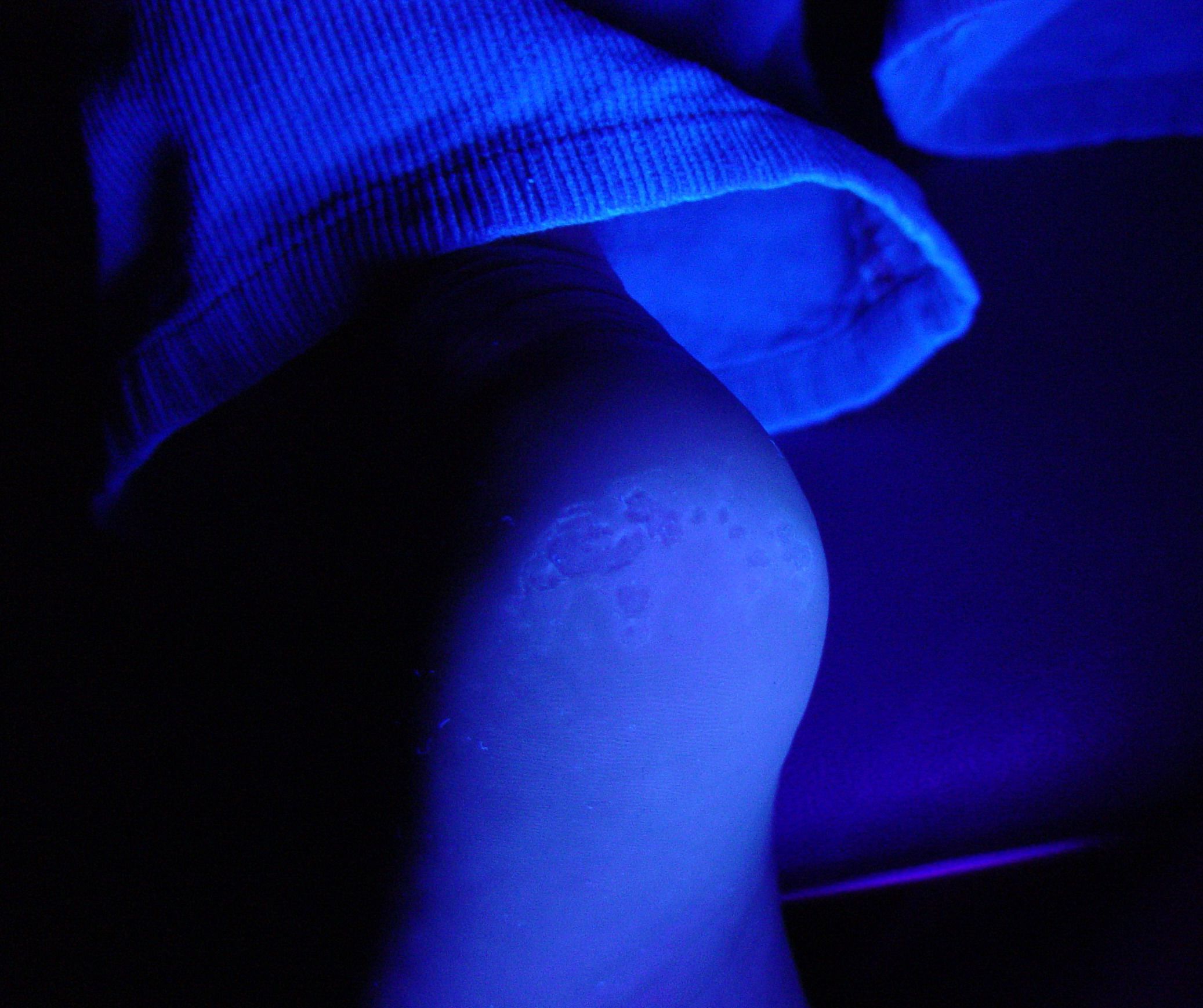Foot Lesions in Young Man
This 23-year-old man developed these lesions on his feet during a 10-month stay in Nicaragua. Initially he had itching and burning. He has been treated with 3 courses of topical antifungal preparations and there is no significant past medical history other than sweaty feet.
This 23-year-old man developed these lesions on his feet during a 10-month stay in Nicaragua. Initially he had itching and burning. He has been treated with 3 courses of topical antifungal preparations and there is no significant past medical history other than sweaty feet.
What is your diagnosis?
- Pitted keratolysis
- Tinea pedis
- Tinea versicolor
- Dyshidrotic eczema
- Erythema multiforme
Diagnosis
Pitted keratolysis causes localized pits due to loss of the stratum corneum from bacterial proteolytic enzymes. It is most often seen with associated malodorous hyperhidrosis.

Corynebacterium, Kytococcus sedentarius, Dermatophilus congolensis and Streptomyces are the bacteria most often implicated. The woods lamp in this case highlights the pits and maceration of the skin. There is also no coral red fluorescence as is typically absent in pitted keratosis. Pitted keratolysis is usually treated with topical erythromycin or clindamycin to reduce bacterial growth and aluminum chloride to reduce the hyperhidrosis.[i]
Tinea pedis causes flaking and peeling of the feet but without discrete punched out pits. It can occur on the heel and instep of the foot as well as between the toes. Scraping for KOH prep can confirm the diagnosis and also, this patient did not respond to topical antifungal preparations.
Tinea versicolor has a predilection for the trunk of adults because of the higher content of sebum in that area which fosters the growth of Pityriasis versicolor. It usually presents with scaly hyper-pigmented patches. However, in sun exposed areas tends not to tan, appearing hypopigmented. KOH prep shows the typical spaghetti and meatballs pattern on microscopy.[ii]
Dyshidrotic eczema causes scale and erythema on the heels and soles of the feet but is not usually associated with hyperhidrosis and in contrast to pits can develop cracking and even painful fissuring.
Erythema multiforme has a predilection for the palms and soles. The characteristic lesions are erythematous macules or target lesions often with central erosions. It frequently follows viral or other infections in young adults.[iii]
References
Wound Care. 2009 Dec;22(12):564-6
conundrum. J Am Acad Dermatol. 2014 Jul;71(1):170-6
2014 Mar 19;311(11):1152-3.
About the Author

Daniel Stulberg, MD, is a Professor of Family and Community Medicine at the University of New Mexico. After completing his training at the University of Michigan, he worked in private practice in rural Arizona before moving into full-time teaching. Stulberg has published multiple articles and presented at many national conferences regarding skin care and treatment. He continues to practice the full spectrum of family medicine with an emphasis on dermatology and procedures.
